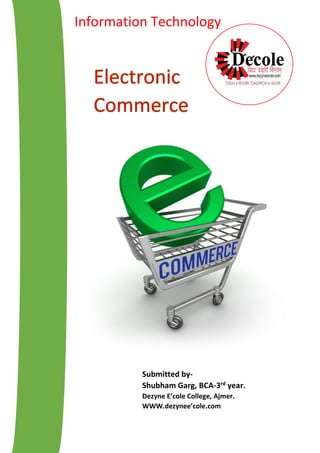The document is a project report submitted by Shubham Garg, a 3rd year BCA student at Dezyne E'cole College in Ajmer, India. It discusses electronic commerce (e-commerce) and is organized into 8 chapters that cover topics such as the introduction to e-commerce, the role of the World Wide Web, the architectural framework for e-commerce, and security and technology aspects of e-commerce. The student thanks his college and project guide for their assistance in completing the project report.

























